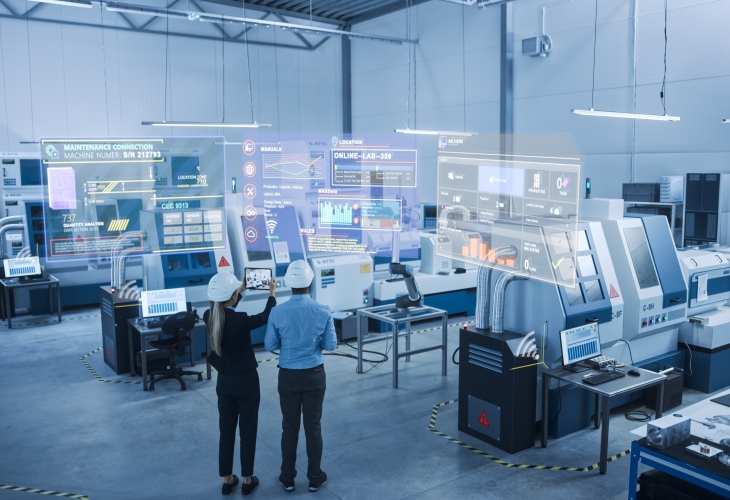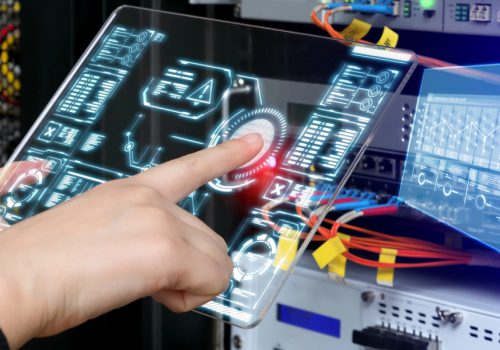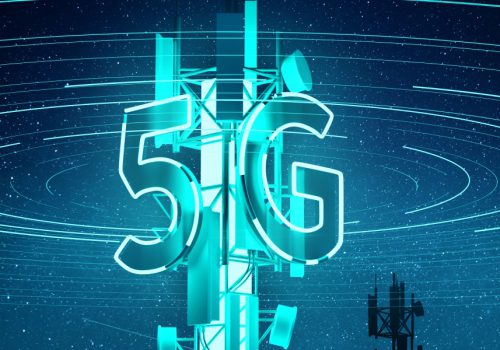The phrases “Internet of Things” and “Edge Computing” seem to pop up in almost every search result I get today. For the most part, they are used interchangeably since they share the same infrastructure. However, upon closer inspection, it becomes clear that they are radically different.
Edge computing complements a number of other cuttingedge innovations, like hybrid cloud and 5G networks. The Internet of Things (IoT) is another area where this technology shines. The edge and the Internet of Things are more than simply a match made in heaven. Inevitably, they will rely more and more on one another.
While the goals of the Internet of Things and the Edge are identical, the paths to getting there are completely different. To see how they vary from one another, we need to examine each technology separately.
IoT in Simple Words
The Internet of Things (IoT) is made up of intelligent devices that are linked to a network. These devices transmit and receive significant volumes of data to and from other devices which results in the production of a vast quantity of data that has to be processed and evaluated.
Edge Computing in Simple Words
IoT data may be captured and processed at the edge by using edge computing, which is a technique for computing on-site where data is received or utilized. This eliminates the need to transport data back to a data center or the cloud.
Let us talk about the Internet of Things and Edge Computing with three real-world applications in the market today.

IoT Real-World Applications
- Automated Home Systems One of the most important uses of the Internet of Things is home automation. The IoT ecosystem allows for the connection of common household items, such as thermostats, fans, and lighting, granting the ability to remotely activate or deactivate the devices. That connection and control is made possible through IoT. In a case scenario where I want to make sure my house is nice and toasty and the lights are on when I get home from work. I can use the IoT app to turn on the heat and lights before I get back in my vehicle and go home. When I finally get there, my home will be nice and toasty. I cut down on my energy bill in the process.
- Robotics and Automation System The Internet of Things is used in factories to automate a wide variety of procedures. Industrial IoT (IIoT) is mainly used to manage equipment and collect vital performance data. The Internet of Things (IoT) is also used by smart factories to automate manufacturing pipeline processes. There is no need for human involvement in any of these processes either.
- Management of the Supply Chain Devices connected to the internet allow supply chain managers to monitor the whereabouts of goods in real-time. Managers make use of sophisticated routing algorithms based on the data they collect to speed up shipping times. The Internet of Things is also helpful for obtaining information after an event has occurred. Thus, that helps the administration to make well-informed choices.
Real-World Application of Edge Computing
- Self-Driving Cars
In order to function properly, autonomous cars must constantly gather information about their surroundings. All of this crucial information is analyzed via edge computing. Then, it processes information in real-time to make judgments that aid the car’s navigation. - The Agricultural Sector
Information regarding crop development, available sunlight, soil quality, pesticide influence, and other factors may be gathered and analyzed with the use of edge computing. To better their operations in the here and now, farmers may utilize this information. They may change when they harvest, how often they irrigate, how often it rains, etc., based on the weather forecast. - Production and Factory Work
Edge computing is used by many industries to collect real-time information about their production processes. They use this data to effectively locate production issues. As a result, the quality of the finished product is enhanced. - In what ways, beyond processing and analytics, may IoT make use of edge computing?

Latency
Many IoT apps are sophisticated, monitoring systems that gather, analyze, and act on data. This is done hourly, daily, or as prompted by a device contact. Edge computing helps IoT get real-time information. By putting computation near IoT devices, data gathering and analytics are closer (i.e. often within the same country or region, perhaps even on the premises, rather than in a large centralized data center). The shorter round-trip to and from the data center reduces network latency. Edge computing optimizes IoT apps requiring real-time activities (e.g. cooling systems turned on as soon as a sensitive piece of machinery starts to overheat).
Bandwidth
Many IoT devices transmit tiny data packets to a data management platform that does analytics. Currently, data is sent to a centralized, typically private, cloud infrastructure. Future growth in connected devices may overburden operators’ backhaul networks. Even though individual data packets are just a few bytes, when streamed in real-time from multiple devices in a relatively limited geographic region, e.g. a manufacturing facility or metro center, the cumulative impact might be considerable. Edge computing may analyze and filter IoT data closer to the devices, optimizing bandwidth by sending only data required for long-term storage or analysis to a central management platform.
Security
How to handle security as more devices are linked is a key IoT challenge. Malware may utilize IoT devices to launch DDoS assaults. Edge computing is not more secure than a private cloud, but it is more proximate. Edge computing may let organizations store data in regions with differing data protection rules than where the data is created. If edge servers are on-premise, firms can be confident data never leaves their local boundary and restrict access to the servers holding the information.
With edge computing, data processing occurs as near to an IoT device as feasible. As a result, there may be benefits for business IT in the areas of latency, performance, cost, and security.
Conclusion
IoT operates without edge computing in many useful scenarios. Edge computing might become essential as more devices are networked and use cases with stricter latency, bandwidth, and security requirements are explored.
Unknowns and obstacles will decide edge computing’s future position in IoT. These include protecting the physical security of edge infrastructure, which stores data outside of designated data centers. Many systems strive to tackle interoperability difficulties and ease device administration and control.
IoT and edge computing save people and companies time and effort. IoT and edge computing may be used in the same infrastructure to accomplish distinct goals.
IoT and edge have separate purposes while seeming similar. Some firms mix them to accomplish aims. IoT devices capture data and edge devices analyze it at the source to provide companies with instant, comprehensive insights.









